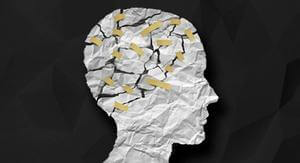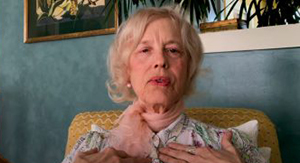Pat Ogden, PhD
Pat Ogden, PhD, is a psychotherapist, renowned innovator in somatic psychology, and leading expert in working with the body to resolve trauma.
She is well-known for developing Sensorimotor Psychotherapy, a body-oriented approach to help patients process traumatic memories and manage threat responses. Sensorimotor Psychotherapy was influenced by Pat’s training in Gestalt Therapy,[1] mindfulness practices, and the Hakomi method.

So what makes Pat a leading figure in the field of body-based psychotherapy? First, we should ask . . .
What is Sensorimotor Psychotherapy?
Sensorimotor Psychotherapy is an approach to treating trauma and attachment issues that encourages engagement in the present moment and mindful awareness of the body.
Pat developed this approach to treat the physical symptoms of trauma and to better target the core physiological states that keep a person trapped in a trauma response.
Sensorimotor Psychotherapy is guided by six foundational principles:
- Mindfulness – Sensorimotor Psychotherapy encourages present-moment awareness – of both our own inner states, and those of others.
- Mind, body, and spirit connection – The mind, body, and spirit are seen as an integrated whole in Sensorimotor Psychotherapy. The approach considers the whole person, rather than treating each aspect of them individually.
- Unity – Unity acknowledges the interconnectedness of all humans, despite our differences.
- Relational alchemy – This tenet emphasizes the value of interpersonal relationships and authentic connection in helping people grow.
- Non-violence – This concept describes the belief that the therapist isn’t the authority on what their client needs in treatment. Neither should the therapist aim to “rid” their client of anything. Rather, it’s key to give the client choice and control over their treatment plan.
- Organicity – Organicity says that the client holds the capacity to heal themselves. The therapist’s role is to simply help the client unveil their inner intelligences and tap into their “higher self.”
These perspectives have strongly informed Pat’s work over the years.
“Everybody has this set of principles, whether they’re conscious or unconscious, that they embody when they’re doing therapy. For me, one of those principles is organicity, that the intelligence is within the client. The answers are within them. The therapist starts to elicit that intelligence – and I think that really starts to build confidence and security in relationship.”
– Pat Ogden, PhD, The Neurobiology of Attachment
Ultimately, the goal of Sensorimotor Psychotherapy is to help clients change any harmful and deeply engrained physical and mental patterns they engage in.
But why is the body such a focal point of Pat’s treatment approach? It goes back to this central tenet of trauma treatment . . .
Talk Therapy Doesn’t Always Heal Trauma
For many clinicians, talk therapy is a foundational part of the therapeutic process. But when used alone, it is not always sufficient to heal trauma.
Just like Bessel van der Kolk, MD, Pat recognizes some of these limitations of talk therapy in trauma treatment. As she puts it,
“Trauma, first and foremost, does affect the body. And talk therapy might not have that hoped-for trickle-down effect to the subcortical brain where the responses to trauma in the body can be resolved.”
– Pat Ogden, PhD, How to Target the Limbic System to Reverse Trauma’s Physiological Imprint
What Pat means by this is that talk therapy mainly targets the “thinking” parts of the brain – specifically, our prefrontal cortex. And while this might provide some short-term relief, it often doesn’t resolve the core physiological damage that drives a client’s trauma symptoms.
That’s because trauma arguably has the biggest impact on our “lower” brain functions – in other words, the instinctive parts of the brain that are responsible for physical survival.
When these parts of the brain are damaged, a person might live in a constant state of hypervigilance and tension. Their body might be on high-alert for future threats, and they may overinterpret danger where there really is none.
This is why Pat doesn’t usually focus on the details of a client’s trauma story. Rather, her approach focuses on the here-and-now – that is, the physical signs of a client’s trauma.
“I feel like we don’t need the content of the trauma at all because the effects of the trauma are living in the client at the present time – in the way they move, in the way they talk, the prosody, the way they think. It’s all right there.”
– Pat Ogden, PhD, Expert Strategies for Working with Traumatic Memory
So what are some ways that trauma affects the body, as Pat claims? With her clients, she especially focuses on this key sign . . .
What Posture Can Reveal About a Client’s Mental Health
Observing a client’s posture can give us insight into their mental states.
You see, when a client is tense, hunched over, or crossing their arms, it might reflect hypervigilance, shame, and a subconscious attempt to protect themselves.
For us practitioners, this can provide us vital information about a client’s mental health, especially if said client struggles to talk about past experiences.
Not only that, but this skill can also come in handy when a client’s words don’t seem to match up with their bodily expressions.
Take this for example . . .
You’re in a session, and your client is talking about their childhood. She’s describing how wonderful it was, how her parents always took her on vacation, how she had so many friends at school . . .
. . . but at the same time, the client’s body is tightening up. Her brow looks strained, and she’s digging under her fingernails.
All these bodily signs tell a different story from what the verbal account does. While this isn’t proof that childhood trauma occurred, it gives reason to probe further into this aspect of the client’s history.
This is why learning to read and track a client’s body language – what Pat calls the “somatic narrative” – is crucial.
So what do we do with this information? The goal is to help clients expand the physical ways of being that feel comfortable to them – something Pat calls “movement vocabulary.”
But how might we do this? Here’s where Sensorimotor Psychotherapy comes into play . . .
How to Use Sensorimotor Psychotherapy to Create New Bodily Experiences
Sensorimotor Psychotherapy can be a powerful tool to help clients expand their “movement vocabulary.”
To get an idea of what this might look like in practice, think back to our client from earlier, who was recounting her childhood memories. As you continue to observe her movements, you notice . . .
. . . her body suddenly, yet slightly twists away. Or maybe her fingers raise a bit. Perhaps her legs tense up and close together.
No matter how subtle, Pat argues that these physical signs often hold meaning – they can indicate bodily movement that wants to happen, but that hasn’t had the chance to be released yet.
“Whenever we’re working with trauma, we have to remember that we’re never working with the actual event – we’re working with patterns of response.”
– Pat Ogden, PhD, How to Work with Shame
However sometimes, clients might be successful in channeling these urges into physical action – though, in maladaptive ways. Self-harm is a common example.
So what’s the antidote to this? How do we help clients undo such harmful procedural patterns and mobilize any unconscious, unresolved impulses that lie within?
According to Pat, the answer lies in having clients create new, healthier bodily experiences.
In other words, we want to have clients “complete” physical responses that have been trapped in the body for long periods of time.
In fact, Pat often quotes one of her long-time mentors, Ron Kurtz, as having said, “Clients are not problems to be solved – they’re experiences waiting to happen.”
But what might this look like? Here are a few exercises that Pat commonly uses with her clients, which she describes in her book Sensorimotor Psychotherapy:[2]
- Straightening the spine – Exercises that focus on lengthening the spine can help a client integrate the parts of themselves that they feel are bad or shameful. These exercises can help improve a client’s breathing patterns, shift a person’s self-perceptions, instill a sense of strength in them, and help them feel more at home in their body.
- Pillow work – Pillows can be a simple, yet powerful way to help trauma survivors acclimate to physical touch and become more aware of physical sensations and boundaries. For clients with ruptured attachment histories, hugging pillows can be a way for them to get the comfort and safety that they may have not received in the past.
- Pushing away motions – These actions can be especially healing for clients who’ve experienced physical or sexual assault, and who didn’t fight back because their body went into collapse/shutdown or a dissociative state.
However, it’s not enough to simply have clients engage in new bodily responses. Rather, Pat says clients must pair these physical actions with mindful awareness. Otherwise, clients are simply indulging in primal impulses, which doesn’t facilitate brain and body integration.
But what is brain and body integration, and how do we help clients develop it?
How to Facilitate Brain and Body Integration After Trauma
During a somatic exercise, it’s important that the parts of the brain responsible for higher order thinking stay online. This prevents the more primitive brain structures from taking over.
One way Pat does this is through skillful languaging and prosody.
Here’s what this means. Say a client becomes hyperaroused during a somatic intervention. In response, Pat avoids statements like,
- “You seem terrified.”
- “You must be feeling horrible.”
. . . as they can further dysregulate the client.
Instead, Pat will say something like,
- “Can you see me right now?”
- “Can you feel your feet on the ground?”
These responses – which Pat calls present-moment contact statements – better serve to contain rising emotions, anchor the client, and bring arousal down.
By doing this in conjunction with methods from Sensorimotor Psychotherapy, we can help stimulate latent responses locked in the body and allow clients to feel more embodied and empowered in their skin.
References
For More Information . . .
Check out a course featuring Pat Ogden, PhD:

The Treating Trauma Master Series
10 CE/CME Credits Available

Working with the Pain of Abandonment
4.25 CE/CME Credits Available

How to Work with the Limbic System to Reverse the Physiological Imprint of Trauma
3.25 CE/CME Credits Available

Expert Strategies for Working with Traumatic Memory
2.75 CE/CME Credits Available
Find out more about how Pat Ogden, PhD works with trauma here:

How to Use the Wisdom of the Body to Heal Trauma
Did you know that the physical patterns of our body not only reflect . .

Addressing White Privilege in a Session
Pat will get into why she addresses her white privilege head on . . .

The Surprising Connection between Posture and Resilience
We can often find clues in their posture . . .

Working with the Body to Release Anxiety
When anxiety strikes, it not only consumes the mind . . .